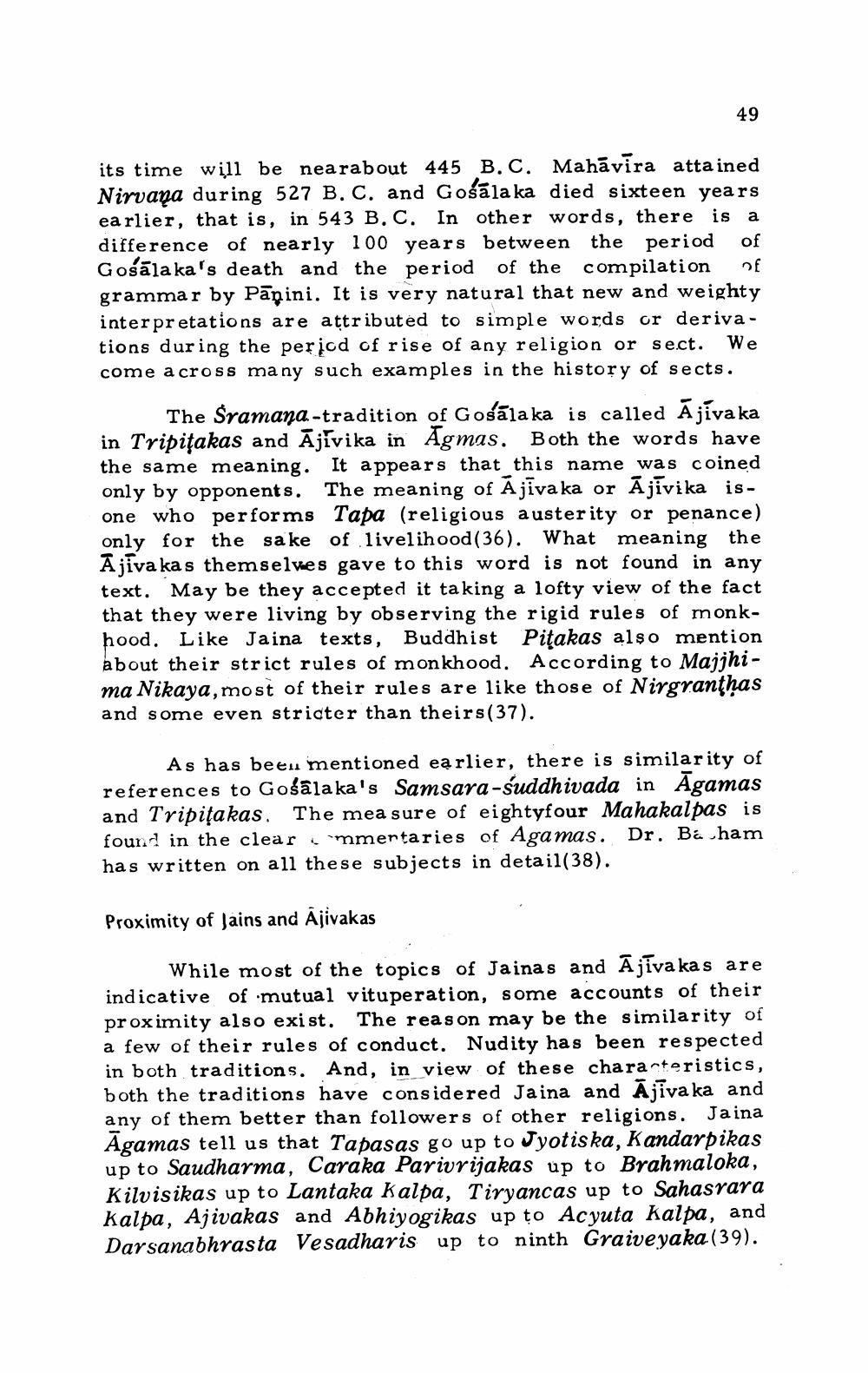________________
49
its time will be nearabout 445 B.C. Mahāvira attained Nirvaga during 527 B. C. and Gośāla ka died sixteen years earlier, that is, in 543 B.C. In other words, there is a difference of nearly 100 years between the period of Gośāla ka's death and the period of the compilation of grammar by Panini. It is very natural that new and weighty interpretations are attributed to simple words or deriva - tions during the period of rise of any religion or sect. We come across many such examples in the history of sects.
The Šramana-tradition of Gośāla ka is called Ājiva ka in Tripitakas and Ājivika in Agmas. Both the words have the same meaning. It appears that this name was coined only by opponents. The meaning of Ajivaka or Ājivika isone who performs Tapa (religious austerity or penance) only for the sake of livelihood(36). What meaning the Ajiva kas themselves gave to this word is not found in any text. May be they accepted it taking a lofty view of the fact that they were living by observing the rigid rules of monkhood. Like Jaina texts, Buddhist Pitakas also mention about their strict rules of monkhood. According to Majjhima Nikaya, most of their rules are like those of Nirgranthas and some even stricter than theirs(37).
As has been mentioned earlier, there is similarity of references to Gošala ka's Samsara -suddhivada in ramas and Tripitakas. The measure of eightyfour Mahakalpas is found in the clear immentaries of Aga mas. Dr. Ba ham has written on all these subjects in detail(38).
Proximity of Jains and Ajivakas
While most of the topics of Jainas and Ājīva kas are indicative of mutual vituperation, some accounts of their proximity also exist. The reason may be the similarity of a few of their rules of conduct. Nudity has been respected in both traditions. And, in view of these characteristics, both the traditions have considered Jaina and Ajiva ka and any of them better than followers of other religions. Jaina Agamas tell us that Tapasas go up to Jyotis ka, Kandarpikas up to Saudharma, Caraka Parivrijakas up to Brahmaloka, Kilvisikas up to Lantaka Kalpa, Tiryancas up to Sahasrara kalpa, Ajivakas and Abhiyogikas up to Acyuta kalpa, and Dar sanabhrasta Vesadharis up to ninth Graive yaka (39).




